Episode 4: Helter Skelter
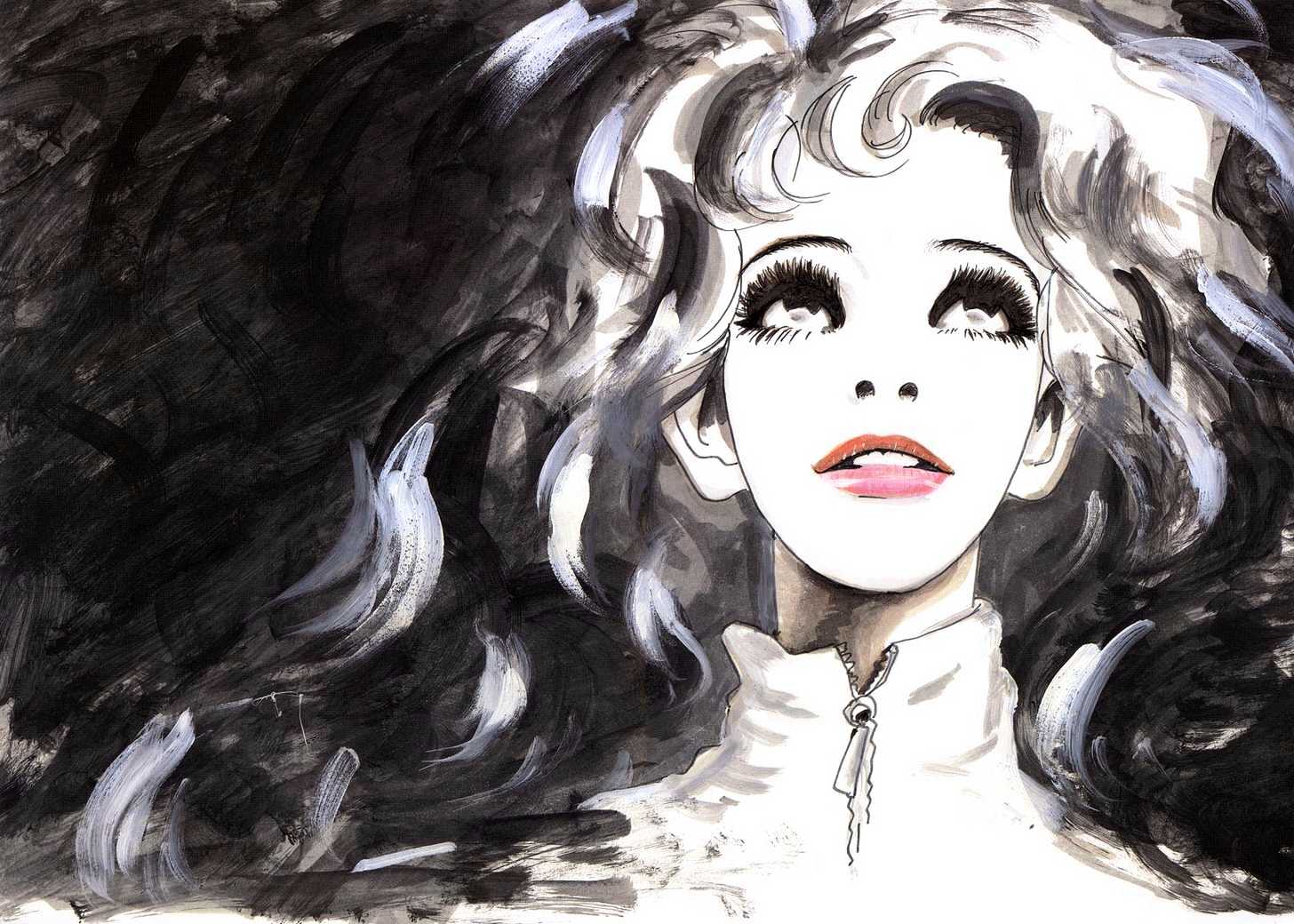
Look out! We’re talking about our first Josei manga title with Helter Skelter by Kyoko Okazaki, published by Vertical Inc./Kodansha.
A few notes before starting this episode!
CW: Sexual assault, suicide. This is a pretty intense, crazy, adult manga. Because of that, this will be the first episode marked explicit/adult. Sorry kiddos, I’m sure there’s a manga podcast out there for you too.
We deeply ‘spoil’ this book in discussing it in a way that we don’t always with these episodes, so please know that going in.
A personal note from Christopher: Sorry for talking So Much this episode. I’ll shut up and let my amazing co-hosts Deb, David, and Chip talk more in future episodes.
Thanks for listening!
Powered by RedCircle
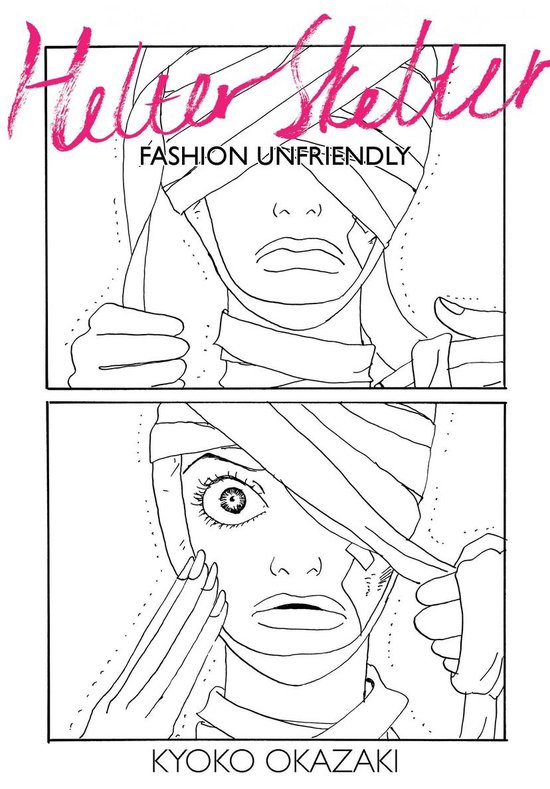
Helter Skelter
ヘルタースケルター
By Kyoko Okazaki
Published by Vertical Inc./Kodansha (Print & Digital)
0:40 Mermaid Saga, not Mermaid Forest, which is a story in Mermaid Saga.
1:30 A quick breakdown of Shonen/Shojo/Seinen/Josei again:
Shonen Manga: Boys’ Manga
Shojo Manga: Girls’ Manga
Seinen Manga: Young Men’s Manga (people in their 20s and 30s)
Josei Manga: Young Women’s Manga (people in their 20s and 30s)
These are the main categories, but you’re welcome to read any manga you want regardless of categories or whatever. You can read a detailed breakdown at the New York Public Library, fwiw.
3:30 It’s worth noting that Helter Skelter DID, in fact, win the 2004 Osamu Tezuka Cultural Award, but it also won the 2004 Japan Media Arts Award for manga, which are basically the two most important prizes for manga in Japan. That’s a big deal.
6:00 Also, there’s no supernatural twist here: People are just horrible sometimes.
6:15 David references Pink, the other manga by Kyoko Okazaki that has been released by Vertical Inc./Kodansha. It’s another great read and you should definitely pick it up if you can find it, as it may or may not be out of print right now.
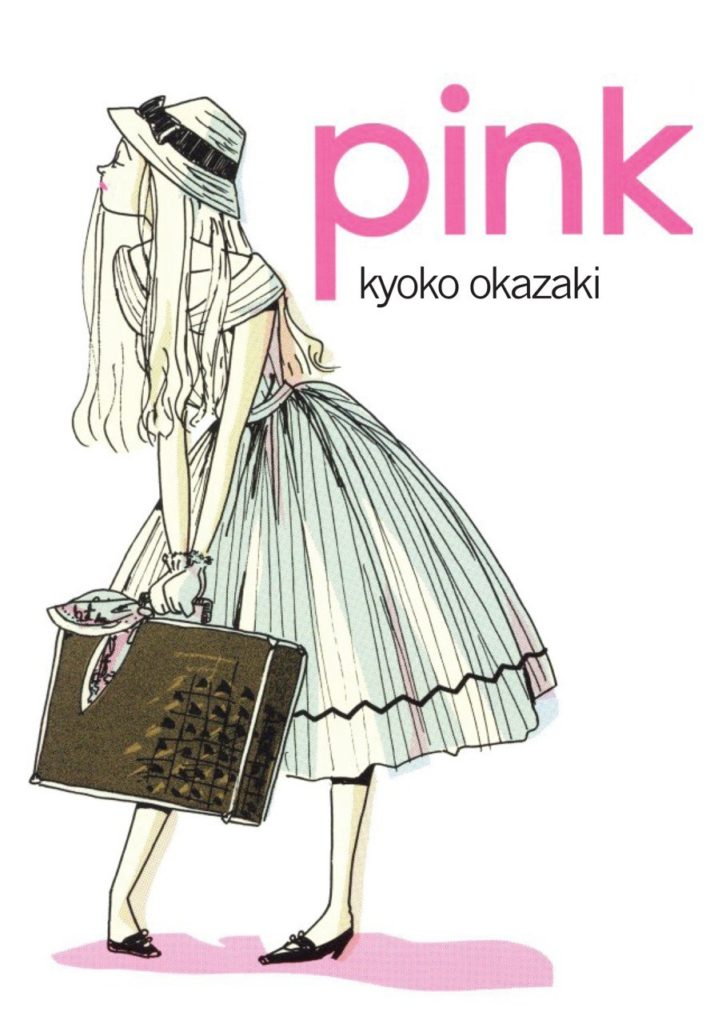
8:45 Deb references Not Your Idol, the manga by Aoi Makino. A gripping tale about fame and PTSD, this shojo story aims much younger than the title under discussion, but is a solid read and discussion of issues around gender, harassment, and more. Published by VIZ Media.
9:00 FEEL YOUNG magazine is an excellent josei manga magazine published by Shodensha in Japan. While unfortunately not much josei is released in North America, there have been some major titles from the magazine released in North America besides Helter Skelter. These include Happy Mania, by Moyoco Anno; Doll, by Mitsukazu Mihara; Suppli, by Mari Okazaki; numerous works by Erica Sakurazawa; and the currently-releasing My Androgynous Boyfriend, by Tameko, published by Seven Seas.
9:45 Shojo is a genre of manga aimed at girls, which had come to be defined almost exclusively by female mangaka. It is a long and varied history, only a little shorter than ‘shonen’ manga (which really all just used to be un-gendered kids’ manga), and its history and depth is too rich to get into here in a footnote. We’ll talk about it when we talk about our first shojo manga at some point. But if you want to take a deeper dive, this looks like an amazing overview. Also both shoujo and shojo are ‘proper’ spellings of this word due to how the anglicization of Japanese happens, we’re trying not to switch between them but it’s tough.
10:15 Moyoco Anno is one of the premiere female manga creators of Japan. She broke into the industry as an assistant to today’s subject, Kyoko Okazaki, and release several short works before her breakthrough series in 1996, Happy Mania. The artistic style of Happy Mania hews closely to Okazaki’s work at that time, although it has grown and significantly changed over the decades. Released at the beginning of the manga boom in North America in the early 2000s, many of Anno’s works have been released in English over the years, including In Clothes Called Fat, Insufficient Direction, and Sakuran (Vertical/Kodansha), Flowers & Bees (VIZ Media), Sugar Sugar Rune (Del Rey), and a digital-only release of Memoirs of Amorous Gentlemen on Crunchyroll. If you snatch up both of Okazaki’s works after this podcast and are hungry for more, we highly recommend investigating the work of Anno-sensei.
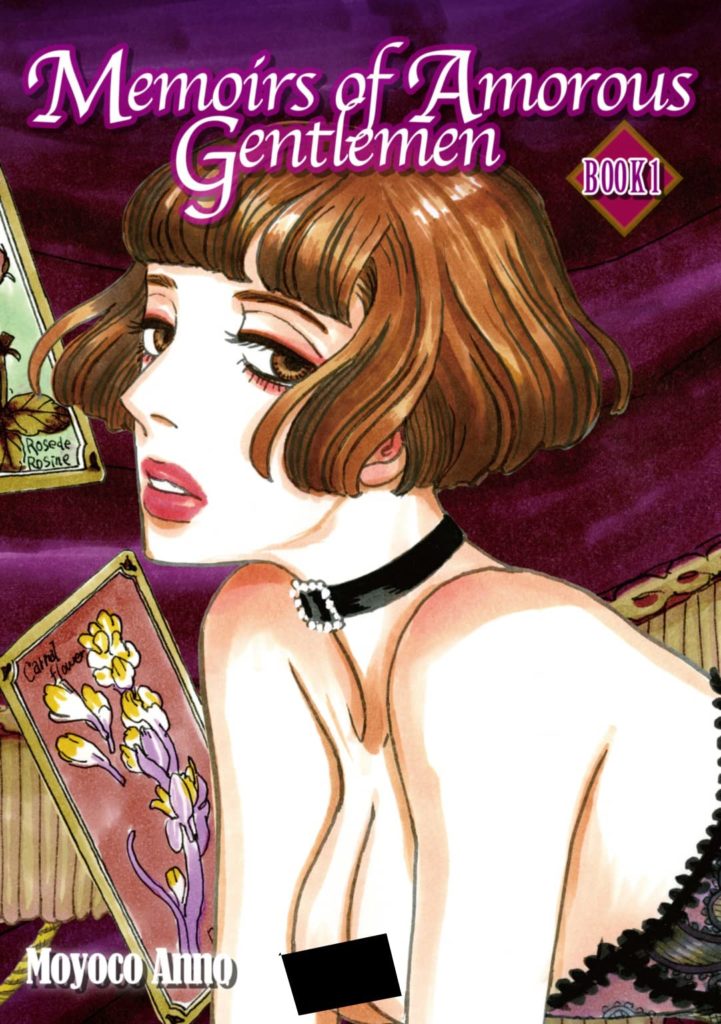
12:00 Just an example of the art from the series.
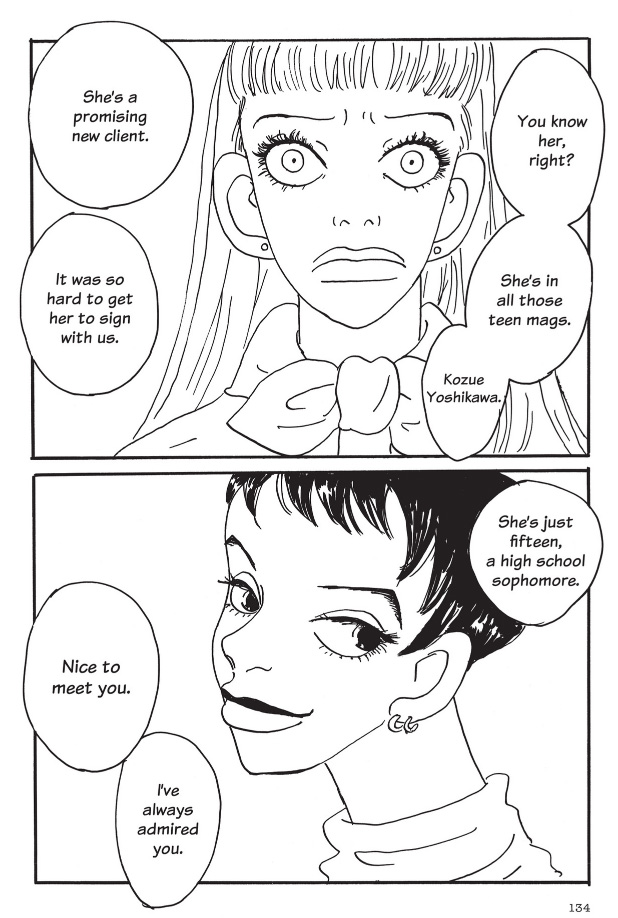
12:50 Emily Carrol is a Canadian illustrator and comic creator. The work in question is a graphic adaptation of Laure Halse Anderson’s Speak. You can see excerpts from the graphic novel here.
14:45 Screentone refers to a ‘screen’ of black dots, to create shades of grey, laid over the art to provide depth or for emotional effect. The screentone is gestural here, as David points out. Here’s an example.
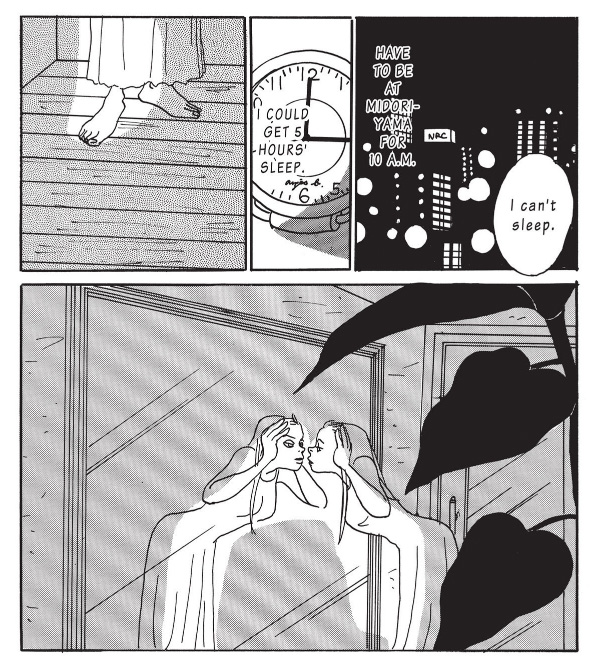
15:45 An example of a ‘tasteful’ sex scene to not titillate, but be clear.
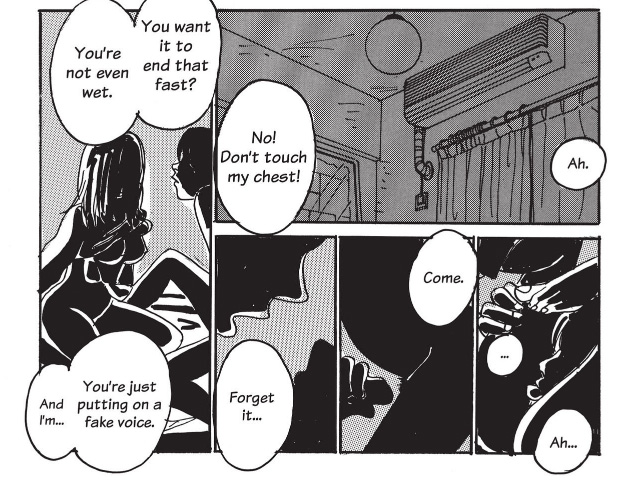
16:30 Insert, tie up, and walk away. Not great. From Helter Skelter page 164
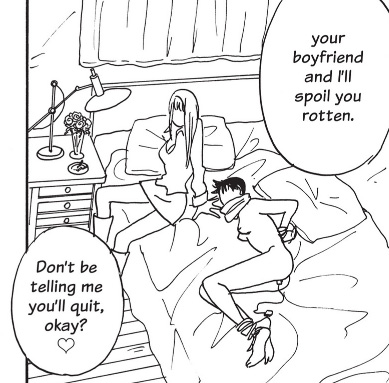
18:00 In response to Chip, Christopher is talking about a whole bunch of visual stuff here, so we’ll go through bit by bit.
The first page Christopher references is Page 81, which is meant to imply a magazine article.
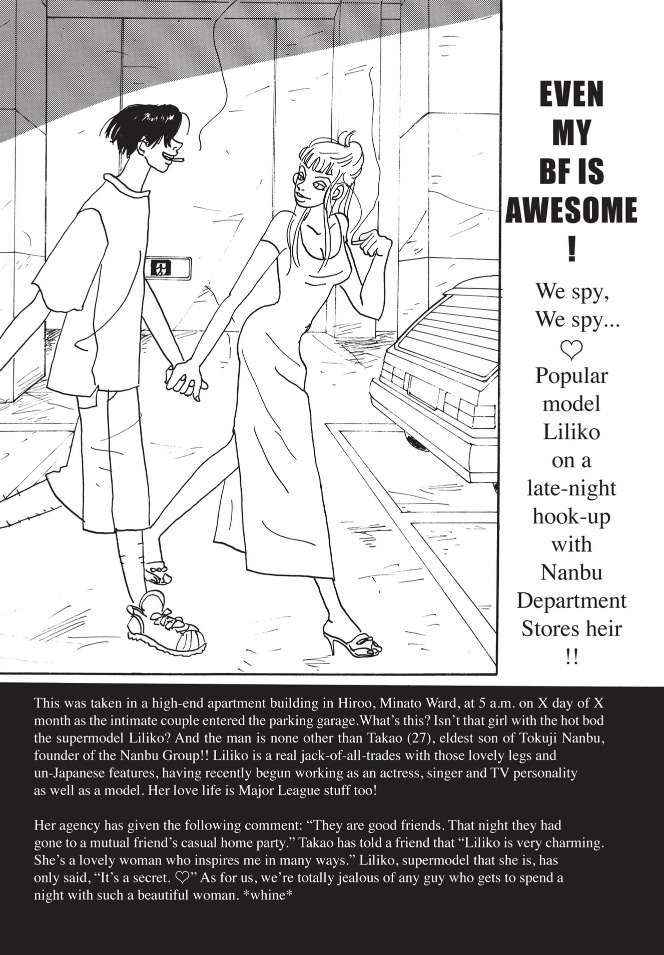
Then Christopher talks about a double page spread at the end of the book, page 278-279, which is a HUGE SPOILER for the ending of the story. This one gets at being a montage of magazine articles arranged inside comic panels.
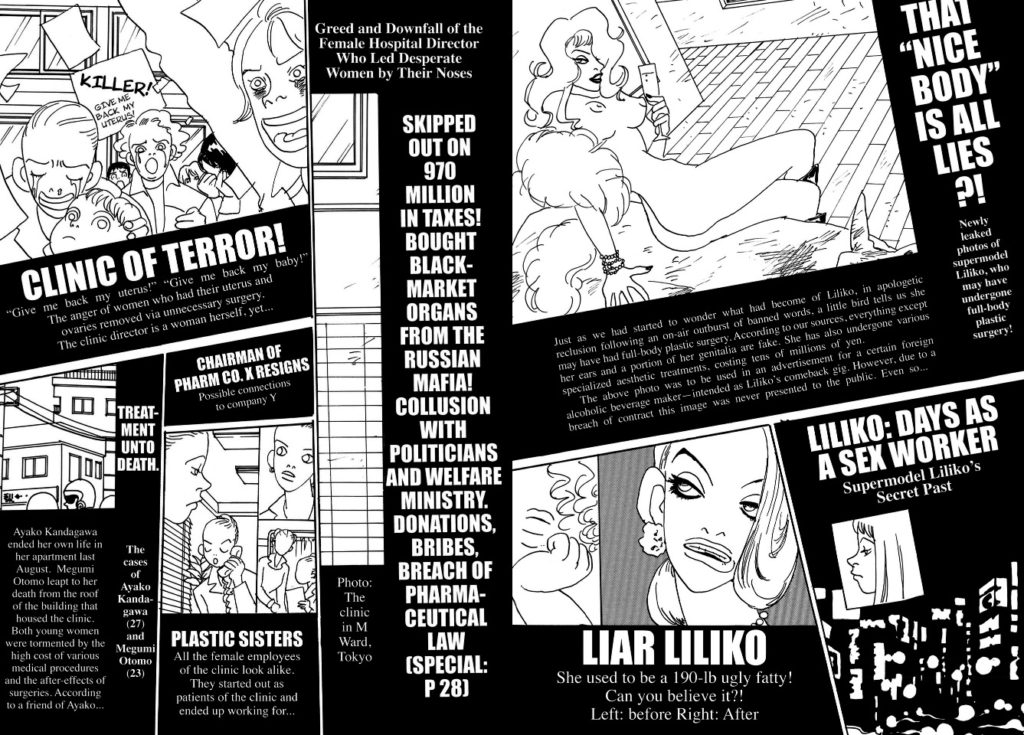
Then we show a Japanese example, the cover of FEEL YOUNG magazine which includes a sort of maximalist approach to magazine cover design in Japan. This cover is by George Asakura, a female manga artist in Japan pretty clearly influenced by Okazaki, best known the English-reading audiences for her work A Perfect Day For Love-Letters.
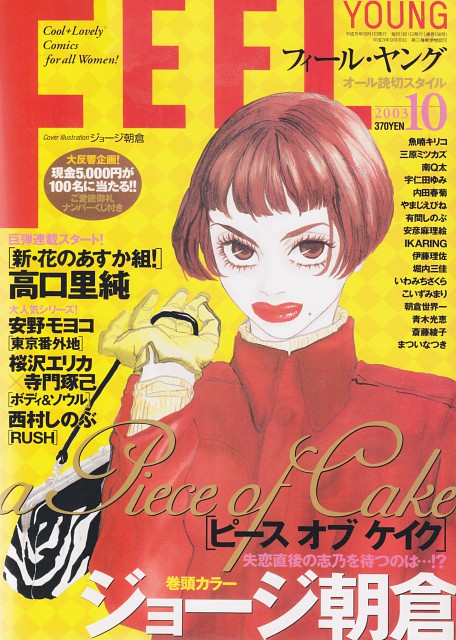
(Unfortunately we couldn’t find a hi-res scan of a FEEL YOUNG cover with Okazaki’s work on it. I’ll update this section if someone can send us one.)
And since we’re showing FEEL YOUNG covers, lets also look at this recent one which features art by Moyoco Anno, coming back to one of her earliest works, Happy Mania (think: Sex In The City In Japan), as the central character from that book reaches 45 years old. I hope it gets translated, I’d love to read it.
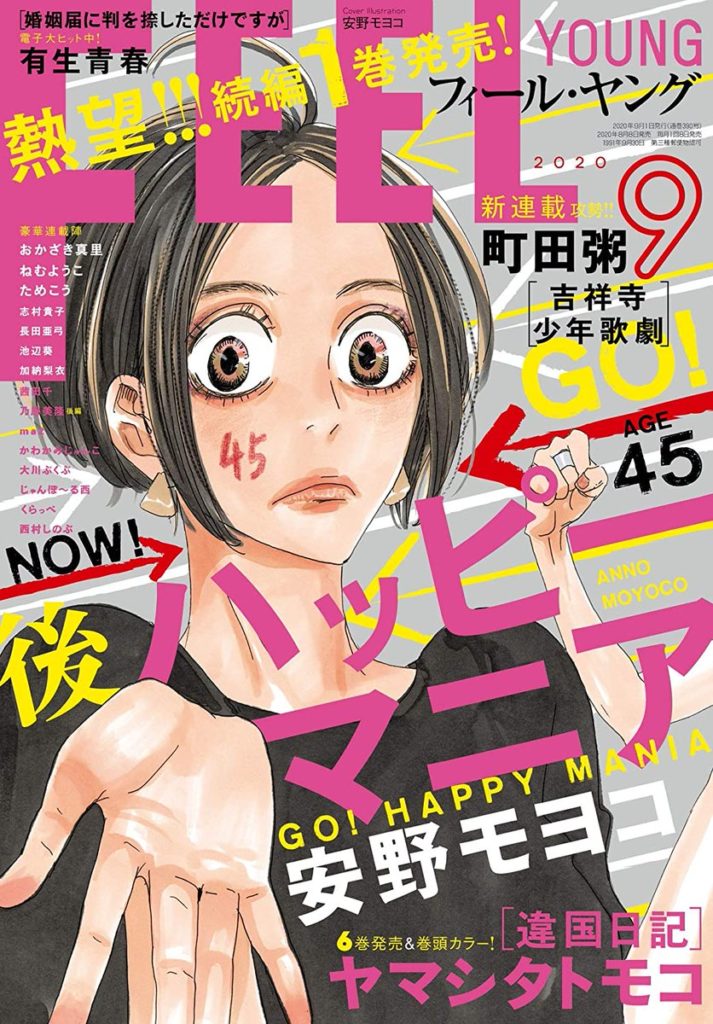
Then FINALLY we talk about the back cover of Helter Skelter, which includes some Japanese text, which can help contextualize how the English text is used.
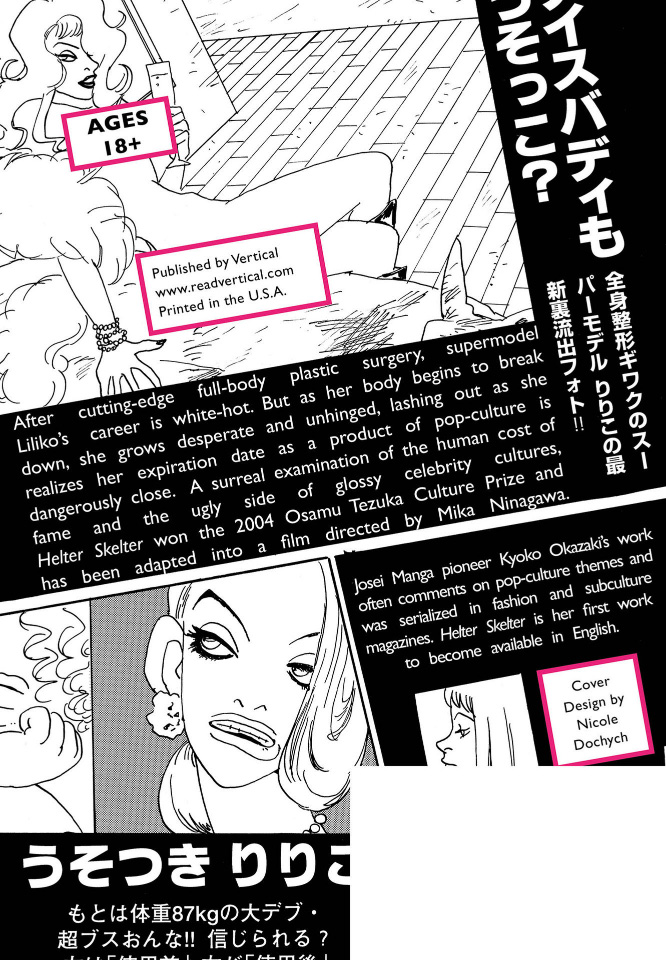
23:40 Chip’s not joking: Heavy Twin Peaks references in the last ⅓ of the book.
24:30 You’ve listened to episode 0, right? For a quick refresher, Domu is the work that Katsuhiro Otomo created just before Akira. Otomo confirmed in an interview that the apartment complex in Domu is based on a real place. Quote:
“The first science fiction manga I wrote was Fireball and when I was working on this manga the movie The Exorcist was released. For some reason, this movie really resonated with me and as a result, I wanted to add a touch of horror to my next manga. Obviously, the foundation would be science fiction but I wanted to add a degree of horror to the story. In those days, there was also a place called Takashimadaira in the northern part of Tokyo that was notorious for repeated cases of suicide of people jumping from large blocks of flats. That was something I used as a setting for this manga that would have a touch of horror.”
– Katsuhiro Otomo
You can see this quote in context in the full interview here: https://www.forbes.com/sites/olliebarder/2017/05/26/katsuhiro-otomo-on-creating-akira-and-designing-the-coolest-bike-in-all-of-manga-and-anime/?sh=821b23e6d253
26:40 The double page spread in question from pages 2-3.
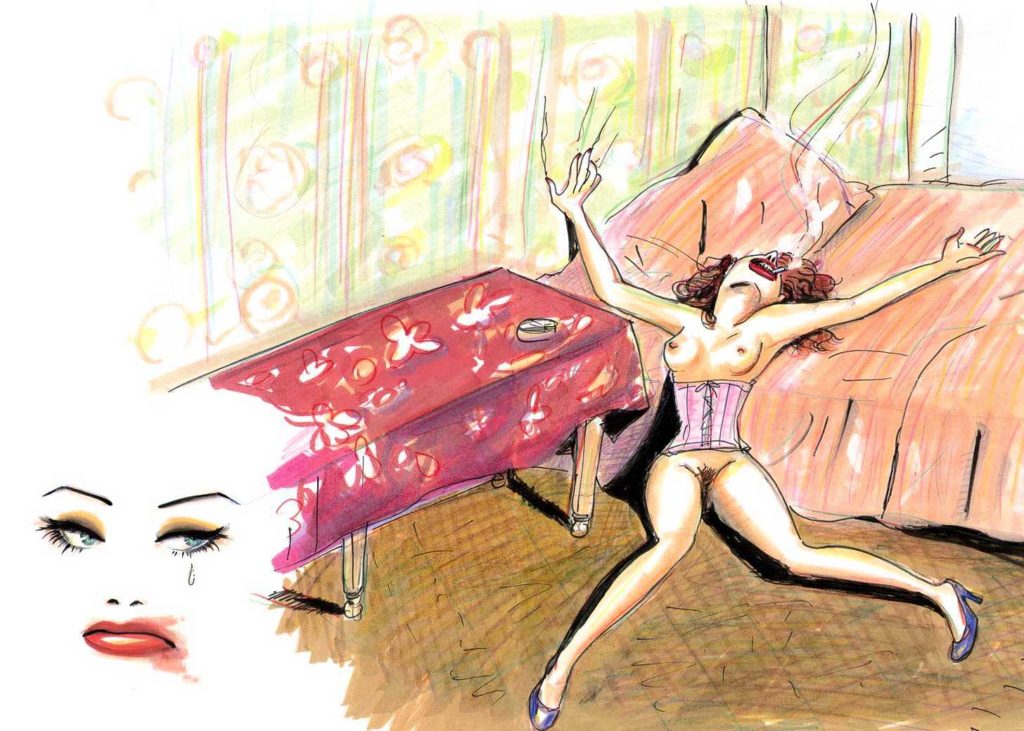
27:50 The Tokyo governors of the past few years have been censors. Ref: https://japantoday.com/category/features/opinions/ishihara-adamant-on-manga-censorship-ordinance
31:00 Just a few quick links to stories on censored creators, for context:
Gay photographer Ryudai Takano:
Vagina artist and mangaka Rokudenashiko:
34:30 Worth noting that Helter Skelter is actually 9 chapters of manga, and almost 300 pages, which is longer than most manga volumes. This may be because of the unique circumstances around its collection, happening after the author went on hiatus due to being injured. More on that 30 minutes from now.
36:00 Christopher is referencing Heaven’s Design Team, by Hebi-Zou and Tsuta Suzuki. Published by Kodansha.
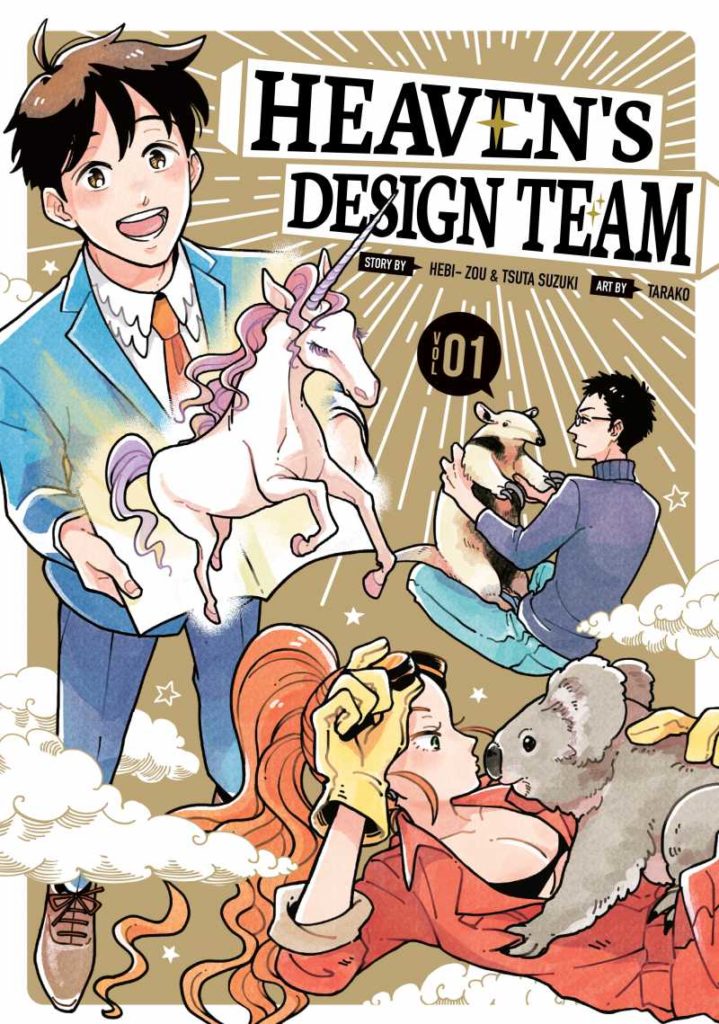
38:00 The tone of this episode of the podcast is about to change.
38:10 The woman’s breast scarred with acid scene that Deb mentions, on page 298:
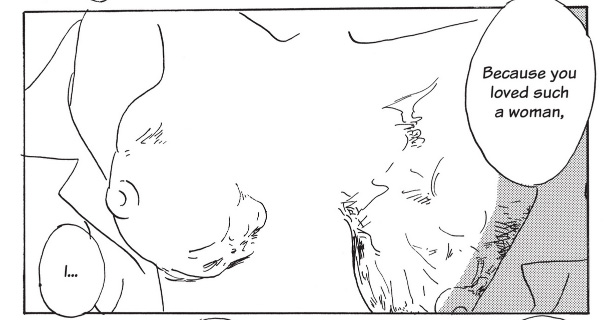
40:25 Naomi Watanabe is an amazing figure in Japanese culture, a big beautiful model, actress, and more. There’s a profile here: https://www.thecoolhour.com/2021/02/culture-fashion-icon-naomi-watanabe/
42:00 Big boys in Japan know Christopher is talking about Sakazen.
42:45 If you missed that story, here’s the deal: “Tokyo 2020 Olympic chief pressed to resign after saying women talked to much at meetings.”
45:10 Helter Skelter was adapted into a live-action film in 2012 by female director Mika Ninagawa. The movie incredibly lush and super-saturated, which has become a hallmark of her directing style. It suits the material very well! It’s a very close adaptation, but the secondary characters are given a little more time and developed in interesting ways, like “Mama.” The film did get a North American arthouse release, but I’m not sure if it’s still available. Here’s the trailer:
It’s worth noting that if you have a Netflix subscription and a VPN, and you set your country to JAPAN, the film is on Netflix with subtitles.
46:10 Simply, a tech pen is an illustration tool that makes a line on the page at a consistent size. A ‘nib’ pen is like a pen used to write caligraphy, and can create thin or thick lines. Here’s the illustration Chip is talking about:
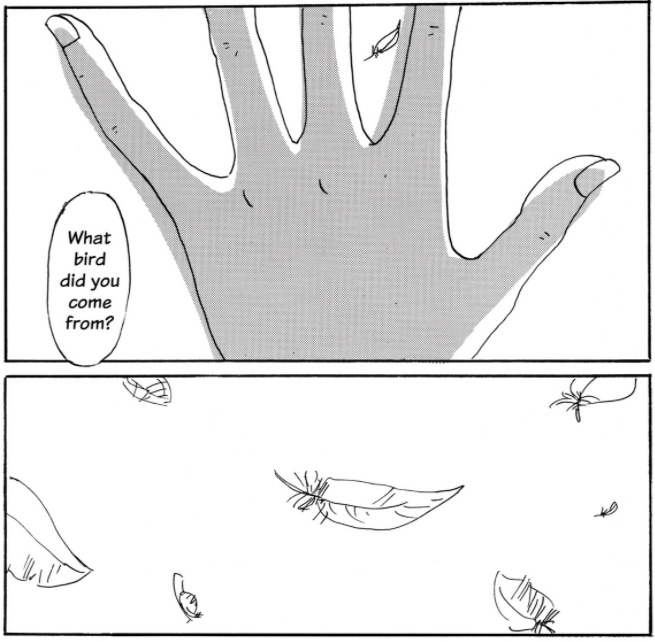
46:45 Natsume Ono is a manga-ka who has been widely translated into English. Her notable works include House of Five Leaves, not simple, and many more. We will almost certainly cover her on Mangasplaining at some point.
49:30 The page 14-15 spread that Christopher mentions.
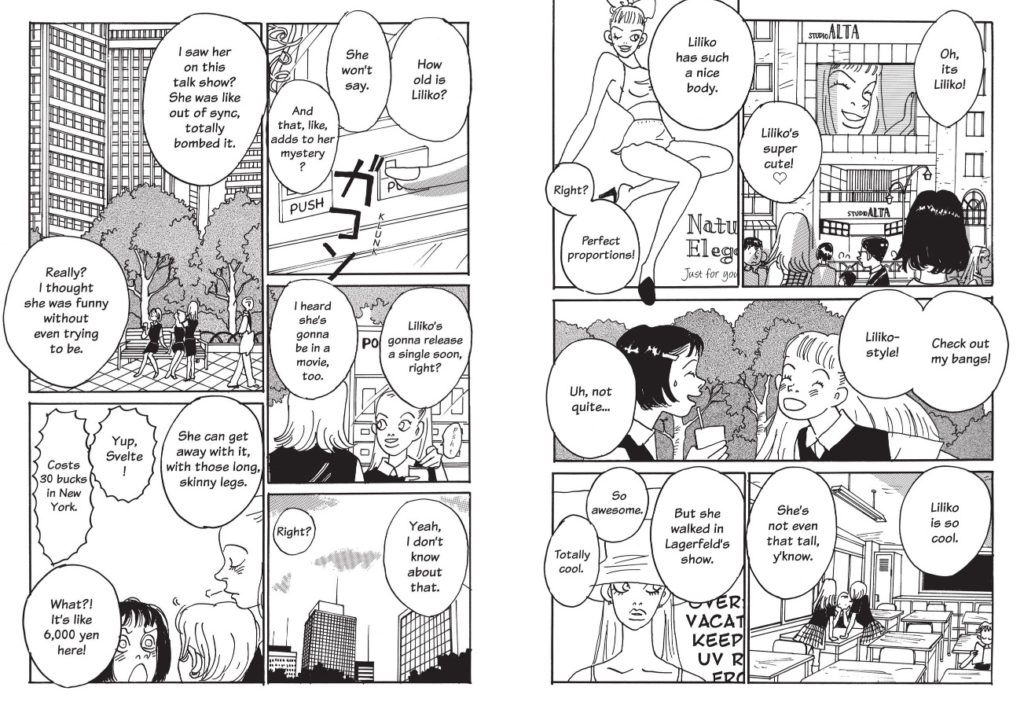
50:05 “In a McCloud kind of way…” Christopher is talking about Scott McCloud, and the different types of panel transitions he outlines in his classic work Understanding Comics.
51:45 Deb references Suppli, by Mari Okazaki (no relation). Published in English by Tokyopop and now out of print, but another important josei series that originally ran in FEEL YOUNG.
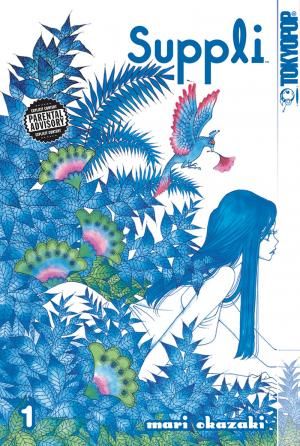
52:15 City Pop. It’s an 80s soft-rock influenced musical and artistic style which has come back in a big way in the last few years. The biggest name in this style (and perhaps its progenitor) is Tatsuro Yamashita, but it’s a surprisingly deep and wide genre and worth exploring a little Here’s a link to his biggest album, For You.
https://www.youtube.com/watch?v=mf5Ra5cV-Ss&t=6s
This is probably an illegal rip. My apologies, we try not to link illegal stuff usually, but since it’s the first google result we’re probably not making the situation worse…
53:40 THE BREAK.
Because of the nature of podcast advertising, the automatic insertion of an advertisement here might throw the show notes timing off a little bit for everything that follows. Our apologies.
53:45: Here’s the text of the note:
A Note From Shodensha Publishing’s Japanese Edition
After the serialization of Helter Skelter ended in May of 1996, Kyoko Okazaki was struck by a drunk driver. She is still currently in rehabilitation. Under normal circumstances manga goes through a process of revisions and corrections before being published in tankoubon or omnibus format, but in this case, excepting some changes confirmed with Ms. Okazaki, the work has been published as is. Ms. Okazaki has been slowly but surely recovering, and we hope to publish a more nearly perfect version in future.
We would like to thank everyone involved with bringing this work to publication, including Moyoco Anno. We are especially grateful to Ms. Okazaki’s family, and offer our thanks and respect from the bottom of our hearts.
– Editorial Department
55:45: Christopher here. I can’t back any of this up with published sources, please take it with a grain of salt, but it is my understanding of the situation. I don’t mean to cause offence, but I think it’s important to share the knowledge I’ve gained.
59:00 The movie really is lush. Here’s some screenshots.

1:00:20 HUGE SPOILERS FOR THE END OF THE MANGA AND THE MOVIE.
1:00:45 Velvet Goldmine (1998) is a film directed by Todd Haynes about pop culture stardom twisting and contorting someone who wants to be a famous musician. It’s loosely based on David Bowie, but it’s very much its own film. The soundtrack is awesome. I feel like if anything, the Velvet Goldmine movie influenced the film version a little, they’re both similarly lush.
1:01:50 Baz Lurhman’s Helter Skelter is a great description from David. Also, the past is low-res.
1:05:45 I May Destroy You is a 2020 television show released for the BBC. Chip does a proper shout-out for it below.
1:07:30 A second BREAK!
We wanted to put a little bit of space between the serious stuff and the other stuff, thanks for your indulgence.
1:08:00 Shout outs!
- CHIP recommends the mini-series for BBC/HBO I May Destroy You, about a young woman trying to rebuild her life after being raped. It’s heavy, very good stuff. Link to the HBO homepage. https://www.hbo.com/i-may-destroy-you
- DEB recommends the fighting manga-series All-Rounder Meguru, by Hiroki Endo. A long-form fighting manga, it’s published digital-only by Kodansha and is available wherever digital books are sold. Christopher jumps in to recommend Hiroki Endo’s Tanpenshu, which is out of print from Dark Horse.
- DAVID Recommends Moyoco Anno’s Instagram, @moyoco_anno. It’s full of gorgeous, delicate art, and you can see how much her style has changed over the years. Cool stuff. https://www.instagram.com/moyoco_anno/
- CHRISTOPHER recommends the One Piece 1000 celebratory short film. An extended commercial/short film, celebrating a book!? So awesome. Check it out: https://www.youtube.com/watch?v=QRGbJuYI–0
1:14:30: So after Christopher talks a bit too long, the next three books have been chosen! That makes our reading list as follows:
Ep. 5: What The Font?!, by Kuniichi Ashiya. March 16
Ep. 6: Wave, Listen To Me! Vol 1, by Hiroaki Samura. March 23
Ep. 7: Yotsuba&! Vol 1, by Kiyohiko Azuma. March 30
Ep. 8: 7 Billion Needles Vols 1-4, by Nobuaki Tadano. April 6
Ep. 9: Tekkon Kinkreet by Taiyo Matsumoto. April 13
1:20:00 Tekkon Kinkreet was released in English, originally, under the title Black & White, to make it easier to pronounce for Western readers. The current edition from VIZ is called Tekkon Kinkreet: Black & White. There’s a LOT more to this section, but we’ll get into it when we get to that episode. Thanks for your indulgence.
…and that’s it for this episode of Mangasplaining!
Those links again are:
Comicshoplocator.com
D.A.D.S. on Spotify
Thanks for listening!
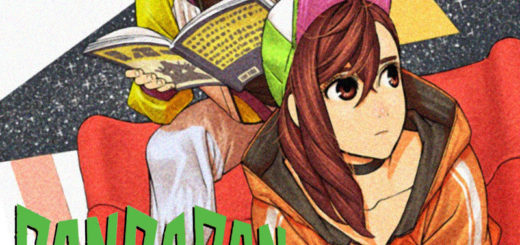
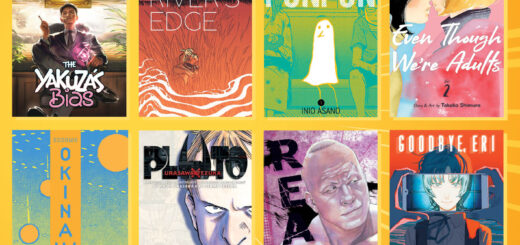
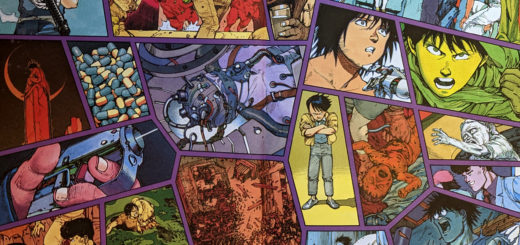
I’m totally with you on Feel Young magazine. Every few years I get a subscription and I’m blown away all over again. Shodensha’s got their finger on the pulse of women’s manga.
Anything by Naoki Urasawa! Monster is probably the best one, although with Chip being a writer and an artist, maybe Billy Bat would be better.
Thanks for picking this one, as it finally forced me to get around to reading it. Helps that it’s a one-volume publication. I would definitely throw this in the literary end of the manga pool, and I think the story and themes depicted therein rival any similar novels or films.
Chris mentions the movie ending differently from the manga, [SPOILERS for the manga] but on the second to last page, before we see Ririko in Mexico, she has two assistants offering her a drink. They look suspiciously like Hada and her boyfriend. I wonder if they went on the lam to escape prosecution for the acid attack, or they still are in thrall to Ririko. Perhaps, now that Ririko is free, they can all be free together.
Interesting note about the movie is how the actress who played Ririko, Eriko Sawajiri, had a quite a contentious relationship with the press and a career that, sadly, parallels Ririko’s in many way.